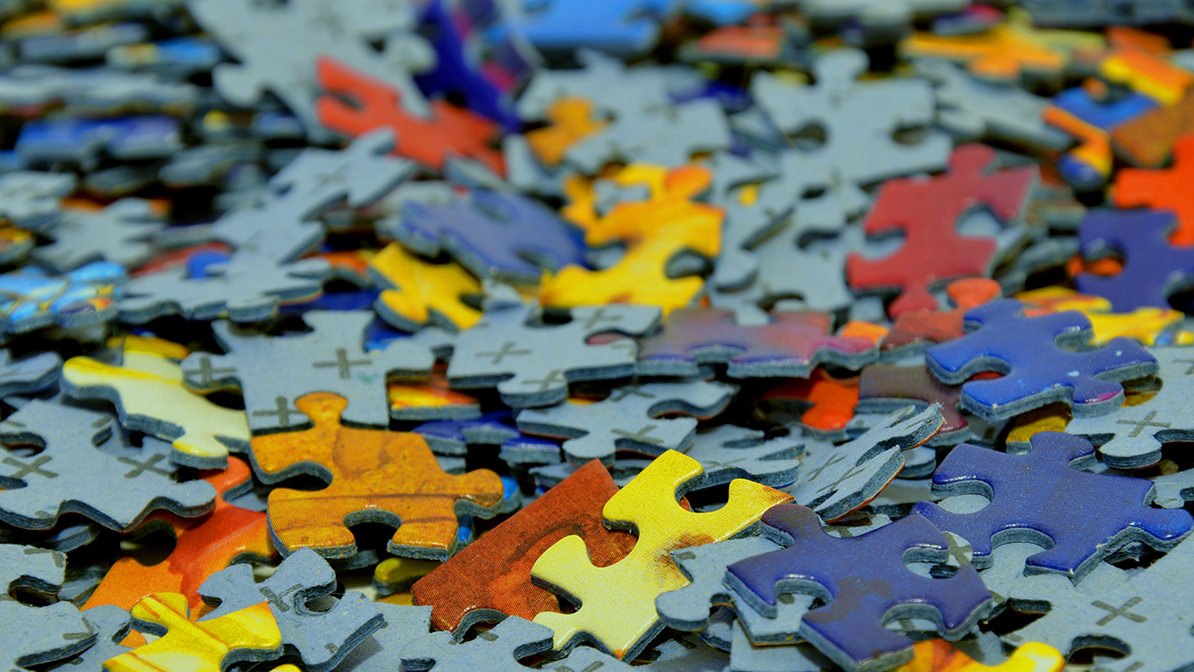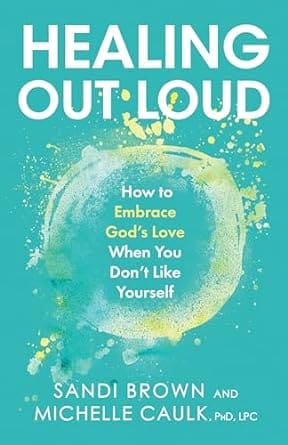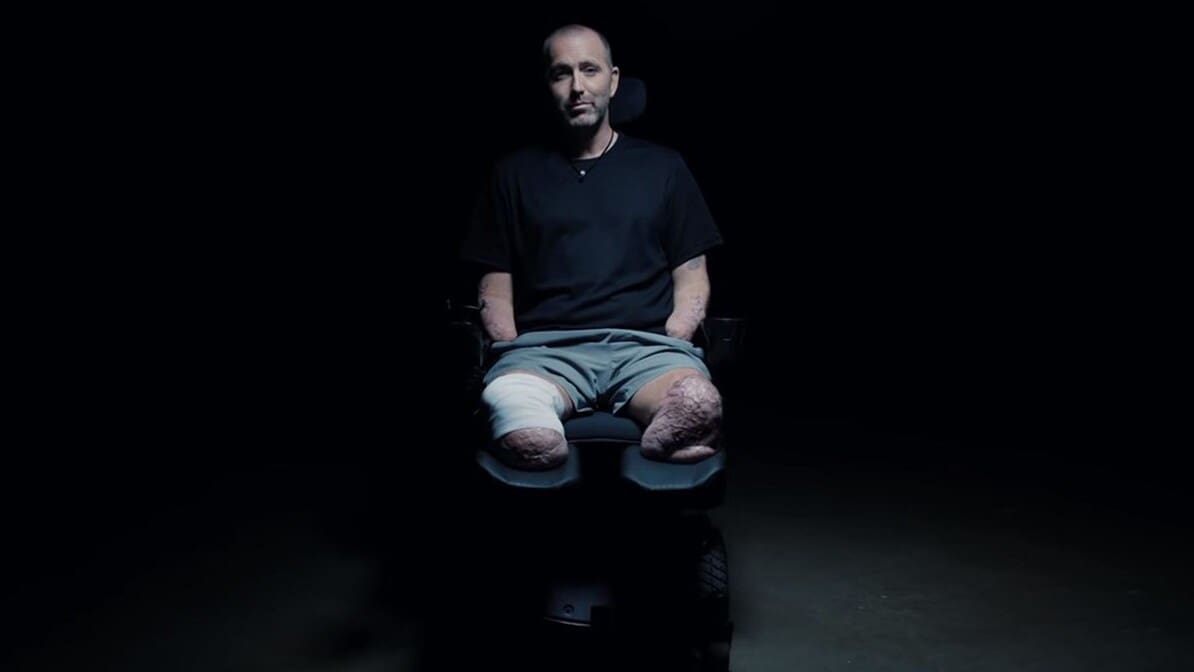
Healing Out Loud: How to Embrace God’s Love When You Don’t Like Yourself
Like a thousand-piece puzzle scattered across the table. With hundreds of missing pieces. That is how I felt throughout the first several months of counseling. I was putting my life on the table, full disclosure, but it wasn’t all fitting together like I thought it would or should. There were aha moments of clarity when pieces came together. Those made sense. They brought peace. I was hopeful. And yet there was an overarching impression that there was more “undone” than “done” in my life.
Unresolved pain was evident. The pieces had been there for years, but they’d been carefully tucked away, kept in the box—ignored, really. But at least they’d been contained. Now they lay exposed. In the open. I had to look at them, feel them, and try to make sense of them.
Wayne Muller, a therapist and author of Legacy of the Heart, noted, “As long as we hold onto how this or that person hurt or dishonored us, we are trapped in a dance of suffering with that person forever.” For me, it felt as though I was trapped in a highly emotional dance with myself and others. And then there were days like the one I described in the email to my therapist Michelle that hit me out of nowhere. My mind, heart, and body felt completely out of sync as I uncovered and examined my past pain. It was unsettling.

Michelle explained there was purpose in processing through the memories and painful experiences. One of those purposes was to realize we have a choice in how we deal with the pain today. We can learn from it. We can release it. We can carry some of it with us. We have a say in all of those choices. That was needed encouragement for the unfamiliar road ahead.
Still, although the counseling work felt meticulous and intentional, it was not always linear and clean. I guess pain rarely is. I’m sure that as a counselor, Michelle understood the process to processing. I won’t pretend to know the nuances of how it all works, but I will try to explain what it felt like from my side of the couch: like a rollercoaster ride through a tornado. Highs, lows, turns, screams, anticipation, fear . . . But I didn’t have my hands in the air. I was holding on for dear life.
Before Michelle and I began processing the memories, I shared with her that I have a lot of blank spaces in my mind. I was thirteen years old when my mom and stepdad divorced. I have very few memories from age six to thirteen. I don’t remember what my room looked like, my childhood friends, my first days of school, or holidays. When I try to remember our family during that time, I just picture the inside of our house as being dark and stuffy. Joyless. Scary.
I was struggling with the fact that I had so few memories. I was concerned that if the truth sets you free, and I couldn’t remember the truth, would I ever find freedom?
Michelle suggested I pray and ask God to bring to mind any memories that were necessary and helpful for healing. That’s what I did. For days. Weeks. And nothing new came to mind. At first, I was frustrated and disappointed. I thought the only way to complete the puzzle of my life and to heal was to put all of the pieces together methodically. Clearly, there were missing pieces and memories.
During that time, God lovingly reminded me that facts and memories aren’t the keys to freedom. He is the way, the truth, and the life. Freedom comes from Him and through Him (see John 14:6). I believe it was a trust-fall moment for me. Was I seeking answers, or was I trusting Him as the source of my freedom? He reminded me of His trustworthy character: “The LORD is my rock, my fortress and my deliverer; my God is my rock, in whom I take refuge” (Psalm 18:2).
The word protection stood out and resonated with me. Was my lack of memory recall a self-protective subconscious act? I don’t know. And I don’t understand why God didn’t restore the memories. But I do know He is my protector. I trust that if additional memories are needed to more fully heal, then He will give them to me. And I trust that if He is protecting my mind and heart in a different way, then I am thankful. Either way, He is faithful.
With that reassurance in mind, I began walking down the road of processing the memories with Michelle. She suggested we take some deep breaths. She explained that it would calm any physical responses that might occur as part of bringing up a memory. Even thinking about a past trauma can trigger a threat response like fight, flee, or freeze mode. So, Michelle had me take deep breaths and asked me to check in with any physical responses that came up as we processed.
At that point we were ready to work through visualizing my memories and identifying the emotions attached to them. Scary, yes! But the idea was to look at the experiences honestly and truthfully, with all of the feelings and visuals they contained, and release them so they were no longer “stuck” in place and affecting me negatively. A way of letting the “loud” out.
The exercise was to imagine I was walking over a bridge while carrying a large bag. The bag represented a past traumatic memory I had been carrying around (like when my dad left or when I was later abused). The bridge represented a path that moved me away from the painful experience and toward a different future.
Once in the middle of the bridge, Michelle had me picture opening the bag. She asked me to see what emotions were present with my memory, giving me the chance to describe those feelings: things like sadness . . . anger . . . anticipation.
Then Michelle began to ask questions about the memory, encouraging me to drill down to the connections between it and the emotions I carried in my bag. Before the exercise ended, there were two important questions to consider:
- What do you want to release and leave behind?
- What are you choosing to take with you as you move forward in healing?
This was a new concept for me—choices—and as we worked through the memory and emotions, I came to understand that I have a say in the healing process. I may not have had a say in what was originally put into my bag (the specific trauma), but I do get to decide what to do with it now, what I want to leave behind, and what I want to take with me as I move forward.
Here is what I chose to leave behind. These things were not going back into my bag:
X Unfair untruths. The beliefs that I am unwanted and unlovable.
X Negative self-assessment. Any shameful lie that contradicts the truth and leads to condemnation.
X Shame about what happened. Something bad happened to me, but that does not mean I am bad.
X Unforgiveness. Bitterness toward anyone in my past. Toward myself.
X A refusal to let go. I held onto the pain so tightly. Or maybe it had a hold of me. Either way, I didn’t realize how much energy it took from me.
Who would want to carry those things around? Not me. Not anymore. I pictured myself naming and throwing each uninvited item off the bridge. It was a visual release of emotions and beliefs that had been weighing me down for far too long. I saw each one descending farther and farther away from me until it splashed into the water below and sank beyond my ability to see it. The memory in my bag was still there, but the connected emotions were gone, no longer mine to carry. I had let go of them all.
The next step was to identify what, if anything, I wanted to put into my bag and carry with me as I left. Was there any gained insight that would be helpful and necessary as I move forward? Here is what I pictured putting into the bag:
✔ Compassion. I have asked God to give me compassion and concern for those who have hurt me. I don’t want to be hard-hearted toward them. Or myself.
✔ Understanding. I will look at my life through the lens of truth. I was hurt. My feelings are normal.
✔ Knowledge that I am loved. My dad wasn’t capable of loving me the way I needed him to. I wish he had. But just because he didn’t love me well doesn’t mean I am unlovable.
✔ Self-control. I am not tethered to anyone who did me harm. Any sort of hold or control they may have had over me is over. They, or their actions, will not define me.
✔ Grace. I will show grace to myself. I am not broken. I was wounded. But I am healing.
✔ Hope. I carry faith in God’s goodness. For me. For my future. For eternity.
I know this process was merely a mental exercise, but I could almost immediately feel the difference in the weight I carried. I paused to thank God. Was I casting my emotions, my cares, and my burdens into the water or into His hands? It didn’t really matter. Either way, I was no longer carrying them.
…
Order your copy of Healing Out Loud: How to Embrace God’s Love When You Don’t Like Yourself by Sandi Brown and Michelle Caulk
Trending Now
Sign up today for your Inspiration Today Daily Newsletter
Supercharge your faith and ignite your spirit. Find hope in God’s word. Receive your Inspiration Today newsletter now!
Sandi Brown
Sandi Brown is the founder and President of Gateway Creative Broadcasting in St. Louis. She leads two radio stations, 99.1 JOY FM and BOOST Radio, with a combined weekly reach of over 500,000. Sandi and Dr. Michelle Caulk, counselor and Assistant Professor and Director of Clinical Experiences at Huntington University, are co-authors of Healing Out Loud: How to Embrace God’s Love When You Don’t Like Yourself. Learn more at healingoutloud.com
Related Articles
December 27, 2025
Praying God’s Word
Praying God’s Word is more than a spiritual exercise—it is a transformative practice that deepens…
November 21, 2025
Thank You … Lord
Gratitude transforms our lives and draws us closer to God. This article explores how practicing…
October 27, 2025
So, Is God Good?
Many people wrestle with the question, is God good, especially when life brings pain and loss.…
September 30, 2025
God Wants to Heal You!
This article is a powerful reminder that God doesn't just want to forgive your sins. He longs to…
Next Steps To Strengthen Your Walk
Inspiration Today Newsletter
Supercharge your faith and ignite your spirit. Find hope in God’s word. Receive your Inspiration Today newsletter now!
Christian Articles
Find articles to strengthen your walk and grow your faith. We have a wide range of topics and authors for you.
Submit A Prayer Request
We are here for you. Simply click on the button below to reach us by form, email or phone. Together we will lift our hearts and voices with you in prayer.





